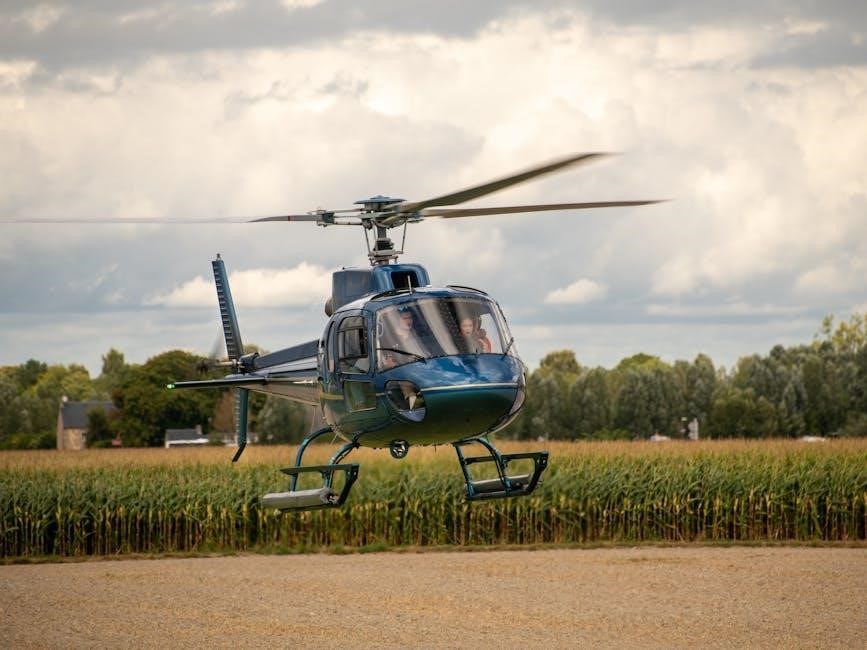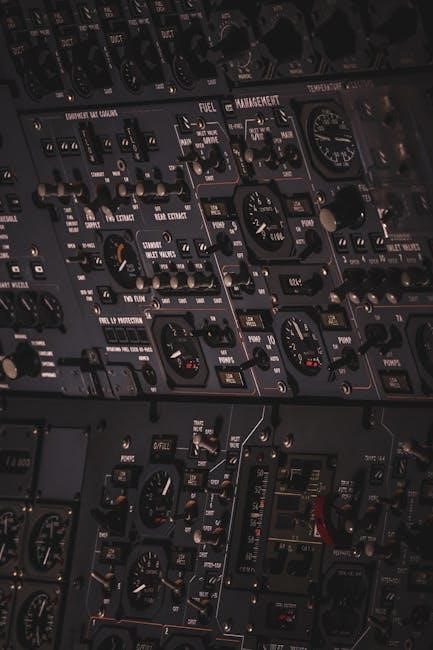Welcome to the 2014 Honda Pilot Owner’s Manual, your comprehensive guide to understanding and maintaining your vehicle. This manual is essential for optimal performance, safety, and troubleshooting. Designed for all models, it covers features, maintenance, and operation tips to enhance your driving experience. Whether you’re navigating city streets or challenging terrains, this guide ensures you get the most out of your Honda Pilot.
Overview of the Honda Pilot 2014
The 2014 Honda Pilot is a versatile and reliable SUV designed for comfort and performance across various terrains. Known for its spacious interior and practical design, it serves as a dependable vehicle for both daily commuting and family adventures. This guide provides essential details about its features, operation, and maintenance, ensuring you maximize its potential and enjoy a smooth driving experience.
Importance of the Owners Manual
The owner’s manual is crucial for understanding your 2014 Honda Pilot’s features, operation, and maintenance. It provides essential information to ensure safety, optimal performance, and longevity of your vehicle. As a permanent guide, it should remain with the car, even when sold. This manual helps you troubleshoot issues, perform routine maintenance, and maximize your driving experience effectively.

Key Features of the 2014 Honda Pilot
The 2014 Honda Pilot offers a versatile mid-size SUV design with a powerful V6 engine, spacious interior, and advanced technology features for comfort and safety.
Exterior and Interior Design
The 2014 Honda Pilot features a rugged yet refined exterior with aerodynamic styling, including a bold front grille and available roof rails. Inside, the spacious cabin offers seating for up to eight passengers, with versatile folding seats for cargo flexibility. Premium materials and ergonomic design ensure comfort and functionality, while the multi-functional center console enhances convenience for drivers and passengers alike.
Engine and Performance
The 2014 Honda Pilot is powered by a 3.5-liter V6 engine, delivering 250 horsepower and 253 lb-ft of torque. Equipped with a 6-speed automatic transmission, it offers smooth acceleration and responsive handling. The i-VTEC technology enhances fuel efficiency and performance. Available in front-wheel and all-wheel drive, the Pilot provides capable towing up to 4,500 pounds, making it versatile for both daily driving and outdoor adventures.
Technology and Safety Features
The 2014 Honda Pilot features advanced technology, including a multi-angle rearview camera and Bluetooth HandsFreeLink for seamless connectivity. The vehicle is equipped with a 7-speaker audio system and USB integration for enhanced entertainment. Safety highlights include the ACE body structure for improved crash protection and electronic stability control for better traction. These features ensure a safe and connected driving experience;

Instrument Cluster and Controls
The 2014 Honda Pilot’s instrument cluster provides essential information, including speed, rpm, fuel level, and temperature. Controls are intuitively placed for easy access to features like cruise control and audio functions.
Dashboards and Gauges
The 2014 Honda Pilot features a user-friendly dashboard with intuitive gauges. The instrument cluster includes a speedometer, tachometer, fuel gauge, and temperature gauge, providing real-time vehicle information. The Multi-Information Display (MID) offers additional data, such as trip meters, fuel economy, and maintenance reminders. Gauges are clearly lit for visibility, ensuring drivers can monitor vital systems at a glance, day or night.
Steering Wheel Controls
The 2014 Honda Pilot features steering wheel-mounted controls for cruise control, audio, and phone functions. Drivers can adjust volume, skip tracks, or answer calls without removing their hands from the wheel. The cruise control buttons allow setting and adjusting speed for convenient highway driving. These controls enhance safety and convenience by minimizing distractions while driving.
Infotainment System Basics
The 2014 Honda Pilot’s infotainment system features a high-resolution touchscreen display, offering access to AM/FM radio, CD player, and USB connectivity. Bluetooth integration allows hands-free phone use and audio streaming. The system supports MP3 and WMA formats and includes customizable settings for sound quality. The intuitive interface ensures easy navigation through menus, enhancing the driving experience with seamless entertainment and connectivity options.

Safety Features and Precautions
The 2014 Honda Pilot features advanced safety systems, including airbags, electronic stability control, and seatbelt reminders, ensuring enhanced protection for all occupants while driving responsibly.
Airbags and Seatbelts
The 2014 Honda Pilot is equipped with a comprehensive airbag system, including front, side, and side-curtain airbags for enhanced occupant protection. Dual-stage front airbags adjust deployment based on crash severity. Three-point seatbelts are provided for all seating positions, with a seatbelt reminder system to ensure proper use. Automatic tensioning seatbelts tighten upon impact to minimize occupant movement, ensuring maximum safety and compliance with regulations.
Child Safety and Seat Installation
The 2014 Honda Pilot prioritizes child safety with a LATCH system for secure child seat installation. Use the Lower Anchors and Tethers for Children to properly fasten seats. Always follow the vehicle and child seat manufacturer’s instructions for correct installation. Rear-facing seats are recommended for infants, switching to forward-facing as the child grows. Consult a professional if unsure to ensure safety and compliance with regulations.
Emergency Procedures
In case of an accident, ensure all occupants wear seatbelts and remain calm. If the vehicle is inoperable, move to a safe location and turn on hazard lights. Contact emergency services immediately. Use the fire extinguisher only for small fires. Stay visible and avoid sudden movements. Refer to the owner’s manual for detailed emergency procedures and guidelines to ensure safety.
Maintenance and Care
Regular servicing ensures optimal performance and longevity. Schedule inspections as recommended. Check fluids, tires, and belts regularly. Use genuine parts to maintain reliability and efficiency.
Scheduled Maintenance
Regular maintenance is crucial for the Honda Pilot 2014; Follow the recommended schedule in the owner’s manual for services like oil changes, tire rotations, and fluid checks. Inspections of belts, hoses, and filters are essential to prevent wear and tear. Adhering to these intervals ensures optimal performance, fuel efficiency, and prevents potential issues. Proper upkeep extends the vehicle’s lifespan and maintains its reliability over time.
Oil Change and Fluid Check
Regular oil changes are essential for the Honda Pilot 2014. Use 0W-20 oil and change it every 5,000 to 7,500 miles, depending on driving conditions. Check the oil level regularly with the dipstick, ensuring it’s at the recommended level. Inspect coolant, transmission, brake, and windshield washer fluids, refilling as needed. Always refer to the manual for specific guidelines and locations to ensure proper maintenance and functionality.
Tire Pressure and Rotation
Maintain proper tire pressure for the Honda Pilot 2014, typically 33-36 PSI, depending on the trim and load. Rotate tires every 5,000 to 8,000 miles for even tread wear. Check pressure monthly and before long trips. Refer to the owner’s manual for specific guidelines and adjustments. Proper maintenance ensures safety, efficiency, and prolongs tire life.

Driving Tips and Best Practices
Practice smooth acceleration and deceleration, maintain a safe distance, and avoid extreme speeds. Regular vehicle maintenance ensures reliability and safety on the road.
Optimizing Fuel Efficiency
For the Honda Pilot 2014, optimizing fuel efficiency involves maintaining proper driving habits. Smooth acceleration, consistent speeds, and avoiding sudden braking can improve mileage. Regular oil changes and tire pressure checks ensure the engine runs efficiently. Additionally, reducing extra weight and avoiding prolonged idling helps conserve fuel. Proper maintenance and driving techniques can significantly enhance overall fuel economy for the vehicle.
Handling and Braking Techniques
Smooth steering and gradual acceleration improve handling and control in the Honda Pilot 2014. Avoid sudden movements, as they can affect stability. When braking, apply the pedal firmly but not abruptly to maintain balance. Always maintain a safe distance from other vehicles to allow ample reaction time. Proper braking techniques enhance safety and reduce wear on the vehicle’s components.
Driving in Different Conditions
Adjust your driving to suit weather and road conditions. In rain or snow, reduce speed and increase following distance. Use gentle inputs on the accelerator and brakes. For sandy or muddy surfaces, maintain steady momentum and avoid sharp turns. When driving uphill, maintain a moderate speed and downshift if necessary. Always engage the parking brake on steep inclines to ensure stability and safety.

Audio and Navigation System
The Honda Pilot 2014 features an advanced audio system with a touchscreen interface, supporting CD, MP3, and USB playback. The navigation system includes voice commands and maps for easy route planning, while Bluetooth connectivity allows hands-free calls and music streaming. Rear seat entertainment options are also available for passenger convenience;
Operating the Sound System
The 2014 Honda Pilot’s audio system features a touchscreen interface, offering easy access to AM/FM radio, CD, MP3, and USB playback. Adjust volume using the control knob or steering wheel buttons. Select audio sources with the touchscreen or physical buttons. Preset buttons allow quick access to favorite stations. The system also supports auxiliary input for external devices, ensuring a seamless listening experience.
Using the GPS Navigation
The 2014 Honda Pilot’s GPS navigation system provides turn-by-turn directions via the touchscreen display; Enter destinations by address, point of interest, or voice command. Choose routing options like fastest route or avoid tolls; The system offers real-time traffic updates and alternate route suggestions. Customize route preferences and view maps in 2D or 3D modes. Voice prompts ensure easy navigation without distractions while driving.
Pairing Bluetooth Devices
To pair a Bluetooth device with your Honda Pilot, ensure Bluetooth is enabled on your device. Go to the infotainment system’s settings menu and select “Bluetooth Device List.” Search for available devices, and select your device from the list. Enter the pairing code if prompted. Once connected, your device will sync with the system for hands-free calls and audio streaming. Ensure your device is compatible with the Pilot’s Bluetooth system for optimal functionality.

Troubleshooting Common Issues
Identify common issues and resolve them promptly. Check the manual for guidance on battery problems, dash lights, and system malfunctions. Regular checks prevent major repairs.
Diagnosing Dashboard Lights
The dashboard lights in your Honda Pilot 2014 are designed to alert you of system status or potential issues. Familiarize yourself with the owner’s manual to understand the meaning of each light. Red, yellow, and green lights indicate different levels of urgency or system activation.
Refer to the manual’s dedicated section for explanations of warning lights. If a light illuminates, check the manual for guidance on troubleshooting or necessary actions. Addressing issues early prevents potential damage and ensures safety. Always consult a professional if unsure about a light’s meaning or resolution.
Resolving Battery and Charging Issues
If your Honda Pilot 2014 experiences battery or charging issues, start by inspecting the battery terminals for corrosion and ensuring they’re securely connected. Use a multimeter to check voltage levels. If the battery is dead, jump-start the vehicle carefully to avoid electrical damage. If the issue persists, replace the battery or consult a professional for further diagnosis and repairs.
Addressing Common Comfort Concerns
For issues like uneven heating or cooling, ensure air vents are unobstructed and the coolant level is correct. If noise is a concern, inspect door seals for proper alignment and consider adding sound-dampening materials. Adjust seats for optimal comfort and use genuine Honda accessories like seat covers for added protection and style. Regularly clean or replace cabin air filters to maintain air quality.

Technical Specifications
The 2014 Honda Pilot features a 3.5L V6 engine, available in FWD or AWD, with a 6-speed automatic transmission, producing 250 horsepower and 253 lb-ft of torque.
Engine and Transmission Details
The 2014 Honda Pilot is equipped with a 3.5L V6 engine, featuring Variable Cylinder Management (VCM) technology for improved fuel efficiency. Paired with a 6-speed automatic transmission, it delivers smooth shifting and responsive acceleration. The engine produces 250 horsepower at 5,700 rpm and 253 lb-ft of torque at 4,800 rpm, ensuring robust performance for both city and highway driving.
The Pilot offers both front-wheel drive (FWD) and all-wheel drive (AWD) configurations, with the AWD system providing enhanced traction and control on various terrains. The transmission includes an Eco Assist system to optimize fuel efficiency, while the engine’s direct fuel injection ensures precise combustion for better power and reduced emissions.
Dimensions and Capacities
The 2014 Honda Pilot measures 191.4 inches in length, 78.6 inches in width, and 70.7 inches in height, with a 109.2-inch wheelbase. Ground clearance is 7.97 inches for FWD models and 8.66 inches for AWD. The curb weight ranges from 4,200 to 4,400 pounds, depending on the trim and configuration.
The fuel tank capacity is 21 gallons, while the maximum towing capacity reaches 4,500 pounds for FWD and 4,850 pounds for AWD models. The Pilot offers seating for up to eight passengers, with cargo space of 16.5 cubic feet behind the third row, expanding to 46.8 cubic feet with the third row folded and 83.9 cubic feet with both second and third rows folded.
Fuel Economy Ratings
The 2014 Honda Pilot offers an EPA-estimated 20 MPG combined, with 17 MPG city and 24 MPG highway for front-wheel-drive models. All-wheel-drive models achieve 19 MPG combined, with 17 MPG city and 22 MPG highway. These ratings ensure efficient performance for both urban and highway driving scenarios.
Actual mileage may vary based on driving habits, conditions, and maintenance. Proper tire pressure and regular maintenance can help optimize fuel efficiency for the Pilot.

Warranty Information
The Honda Pilot 2014 comes with a comprehensive warranty package, including a 3-year/36,000-mile basic warranty and a 5-year/60,000-mile powertrain warranty. Additional emissions warranties extend coverage for up to 15 years or 150,000 miles, ensuring long-term protection and peace of mind for owners.
Understanding Coverage
The Honda Pilot 2014 warranty provides detailed coverage for repairs and replacements of defective parts. The basic warranty covers repairs for 3 years or 36,000 miles, while the powertrain warranty extends to 5 years or 60,000 miles. Emissions-related components are covered for up to 15 years or 150,000 miles. This ensures owners receive protection for essential vehicle systems and components, minimizing out-of-pocket expenses for repairs.
Maintenance Warranty
The Honda Pilot 2014 maintenance warranty covers routine services like oil changes, tire rotations, and inspections for 2 years or 25,000 miles. This program ensures your vehicle receives factory-recommended maintenance, helping to reduce costs and maintain performance. Services are performed by certified technicians using genuine Honda parts, ensuring reliability and adherence to manufacturer standards. Refer to your manual for specific details and eligibility requirements.

Accessories and Customization
The Honda Pilot 2014 offers a range of approved accessories, including roof racks, cargo organizers, and alloy wheels, to enhance functionality and personal style. Customization options allow owners to tailor their vehicle to specific needs, ensuring both practicality and aesthetic appeal while maintaining manufacturer standards and warranty compliance.
Approved Accessories
Honda-approved accessories for the 2014 Pilot are designed to enhance functionality and style while maintaining safety and durability standards. Options include roof racks, cargo organizers, bike attachments, and alloy wheels. These accessories are specifically engineered to fit the vehicle, ensuring proper installation and compatibility. They offer practical solutions for storage, protection, and personalization, catering to diverse lifestyles and preferences without compromising the vehicle’s performance or warranty.
Interior and Exterior Modifications
Interior modifications for the 2014 Honda Pilot can include seat covers, trim upgrades, and cargo management systems. Exterior modifications may involve body kits, decals, or roof spoilers for enhanced styling. All modifications should align with Honda’s guidelines to ensure compatibility and safety. Consult the manual to avoid voiding warranties or compromising vehicle performance and reliability.
Environmental Considerations
The 2014 Honda Pilot incorporates eco-friendly features like fuel-efficient engines and reduced emissions. Proper disposal of hazardous materials, such as batteries and fluids, is essential for environmental protection.
Eco-Friendly Features
The 2014 Honda Pilot is designed with eco-friendly considerations, featuring an efficient engine that reduces emissions. The Variable Cylinder Management system improves fuel efficiency, lowering environmental impact. Eco-assist technology helps drivers optimize fuel consumption, while the ECON button enhances efficiency further. These features promote sustainability while maintaining performance, aligning with Honda’s commitment to environmental responsibility and reducing carbon footprint.
Proper Disposal of Materials
Proper disposal of materials from your Honda Pilot is crucial for environmental protection. Batteries, oils, and other hazardous waste should be disposed of at authorized facilities. Recycle tires and parts responsibly. Always follow local regulations and guidelines for waste management. Honda encourages eco-conscious practices to minimize environmental impact and promote sustainability.
Downloading the Manual
Visit the official Honda website to download the 2014 Pilot Owner’s Manual. Navigate to the “Support” section, select your vehicle’s model year, and download the PDF.
Steps to Access the PDF
To access the 2014 Honda Pilot Owner’s Manual, visit Honda’s official website and navigate to the “Owners” section. Select your vehicle’s model year (2014) and enter your Vehicle Identification Number (VIN) when prompted. Click the “Download Manual” button to retrieve the PDF. Ensure your device has a PDF reader installed to view the document. Save or print the manual for easy reference later.
Printing and Saving Options
The 2014 Honda Pilot Owner’s Manual can be printed using Adobe Acrobat Reader. Open the PDF, select “Print” from the File menu, and choose the desired pages or range. For saving, click “Save As” to store the file on your device. Consider creating a backup on an external drive or cloud storage for easy access. Ensure your printer settings match the document size for proper formatting.
The 2014 Honda Pilot Owner’s Manual is a vital resource for optimal vehicle performance and safety. Refer to it regularly for guidance and updates to enhance your driving experience.
Final Tips for Manual Usage
Regularly review the manual to stay informed about features and maintenance. Understand symbols and terminology for better comprehension. Always reference the manual before making modifications. Keep it clean and stored securely for easy access. Familiarize yourself with updates or supplements provided by Honda. Use the manual as a guide for troubleshooting and routine care to ensure optimal performance and longevity of your Honda Pilot.
Staying Informed About Updates
Regularly visit Honda’s official website for updates to your owner’s manual. Register your vehicle to receive notifications about revisions or supplements. Check for downloadable PDF updates and review them thoroughly. Stay informed about recalls or software updates for your Honda Pilot. Bookmark the support page for easy access and ensure your manual remains current for optimal vehicle performance and safety.